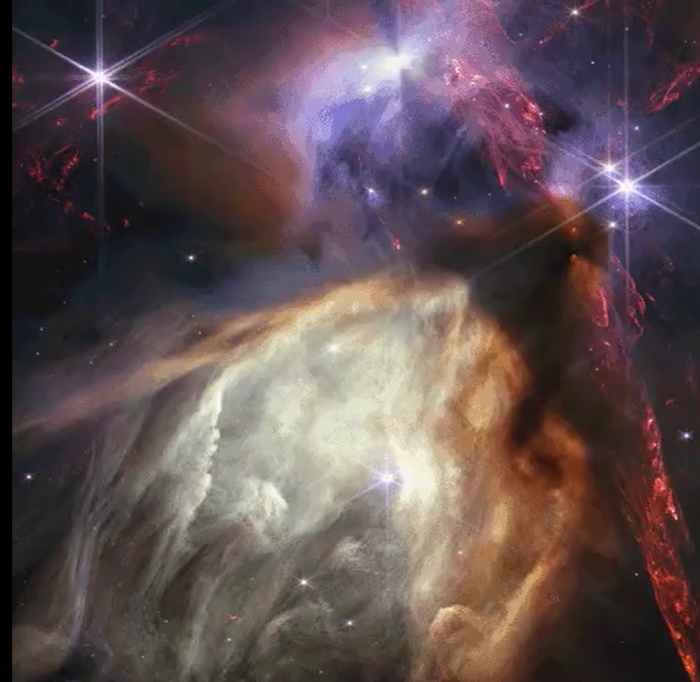Violent births and equally catastrophic deaths: the explosive life of massive stars was photographed by the James Webb Space Telescope.
The images taken by Ophiuchus, Wr 124 and Cassiopeia summarize three crucial moments in the life cycle of these stars, commented by astronomer Nienke van der Marel, of the University of Leiden.
The cradle of stars in the constellation Ophiuchus, photographed by Webb using filters with different characteristics, "is a few million years old", comments Ivan der Marel. "These stars - he adds - are still growing and planets are forming around them". By enlarging the image you can see a kind of hourglass: it is a disk of dust around a star, from which planets could be born, in a process that takes millions of years.
An evolving star is WR 124: “it has consumed most of its hydrogen and has already lost its atmosphere.
With a mass more than 20 times that of our Sun, it is a huge star – says the astronomer – and is a million times brighter.
Massive stars like this one evolve rapidly because they comprise a large amount of material and lose mass rapidly. "It is destined to explode in hundreds of thousands of years: a relatively short time on the astronomical time scale."
Cassiopeia instead gives the idea of what remains of a star that reached the end of its life cycle and exploded in a supernova: "it remains a visible cloud for thousands of years. The orange and red material is hydrogen from interstellar matter that was pushed away when the star exploded The lighter, pink material is probably leftover from the star itself. So these are the elements and atoms that were created in the star."
The Cassiopeia explosion dates back about 350 years.
No one knows what the green ring in the center is, commonly called the 'green monster'.
Reproduction reserved © Copyright ANSA

